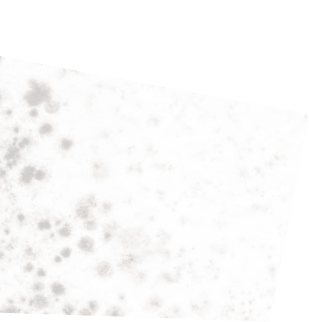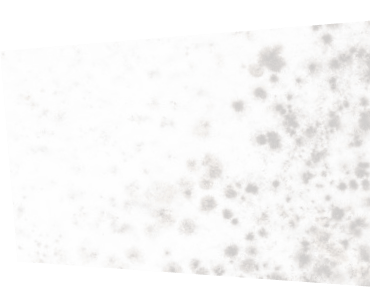The air quality in your home is so important to keeping the quality of life high for you and your residents. Residential properties face an uphill battle in keeping the air safe and clean and two major causes for reduced air quality are mold development and presence of asbestos material inside the home. Mold can easily develop in areas of your home with excessive moisture and contaminate the air with spores and airborne bacteria.
If you own an older home, the presence of asbestos is more serious as the material can cause severe health problems when exposed to contaminated air. We recommend scheduling asbestos testing in Toronto even if you have not noticed any visible signs of the material on your walls. Mold should also be dealt with immediately as it can cause respiratory problems, allergies and other health issues in people with sensitivity or immune issues related to mold. Mold is a problem in many homes and building, so be sure to educate yourself on how to handle a mold problem — hire the right professional for your particular issue.
The difference between mold and asbestos
Mold and asbestos are both equally dangerous when present in your home, but originate from very different sources. One of the major differences between mold and asbestos is that mold is a biological fungus that breeds and festers in the home while asbestos originates as a mineral and was added to various construction and renovation materials that were commonly used in home building. Mold also has the ability to spread if left unchecked increasing the amount of bacteria and spores it released into the air. The amount of possible asbestos in your home remains static and does not spread or reproduce.
The key difference between asbestos and mold is that mold is a living organism that grows and spreads with the right amount of moisture and oxygen. Asbestos on the other hand remains static in your home, meaning it won’t grow or spread in the same way mold would. Asbestos is non-living, non-reproductive, and its airborne fibers can cause serious health issues if inhaled.
The truth is, both mold and asbestos have the ability to become a huge health risk that must be dealt with in a professional manner. It’s important to note that these are two very different organisms with different characteristics. While there are a number of steps you need to take to prevent both diseases in your home, the steps you need to take for each very different. Asbestos removal in Toronto should always be done by a professional, where as yo can sometimes be safe with DIY mold removal in Toronto.
Possible sites for mold and asbestos in your home
Mold can find its way into the most inaccessible and darkest parts of the home such as:
- Basements and cellars
- Attics and crawl spaces
- Bathrooms and kitchens
Asbestos material was commonly used in:
- Wall insulation
- Paints and flooring adhesives
- Roofing shingles and firewall tarps
Is your home a haven for mold growth?
Mold growth occurs in areas of the home where excessive humidity and moisture can occur. Lack of or restricted ventilation prevents excess moisture from evaporating naturally which dampens surfaces and creates an excellent breeding ground for any of the hundreds of species of the fungus. Using bathroom fans are a must for evacuating humidity but other areas of your home such as basements or cold cellars may not have the best air exchanges and could be hotspots for mold development. Mold’s preference for dark places also makes detection a challenge and if left unchecked could easily grow and take hold of other nearby surfaces and fixtures.
Why your home may have toxic asbestos material in its construction?
Asbestos was used extensively in residential construction for decades as it had excellent fireproofing ability. Studies over time had revealed that asbestos material would eventually break down and release ‘dust’ into the local air. This asbestos ‘dust’ resembled micro shards and were found to create severe and chronic health problems for anyone exposed to asbestos-contaminated air. Most municipalities and local governments have banned the use of asbestos in products but homes built in the 1990’s or earlier may have asbestos derived construction materials. Off branded and cheaper paints may also use asbestos in their composition.
Mold in your home can cause a variety of chronic health problems
Another difference between mold and asbestos are the health effects caused by either. Mold reduces air quality by releasing bacteria and spores into the air. Exposure to ‘moldy air’ can cause:
- Shortness of breath
- Allergy and hay fever symptoms such as irritated eyes, skin and throat
- Fatigue and lethargy
- Irregular sleep patterns leading to emotional and physical problems
- More colds and flus with increased recovery times
- Constant headaches and reactions to musty odors associated with mold
Long-term exposure to contaminated air can lead to more severe lung and respiratory issues.
Asbestos has been linked to more severe and terminal health issues
If you suspect asbestos in your home, you may be inhaling ‘asbestos dust’ which is made of microscopic shard like particles that can scar lung tissue. Exposure to asbestos dust has been known to cause various lung and abdominal cancers as well as other terminal diseases such as mesothelioma. Now considered highly toxic, asbestos is no longer used in construction and should only be removed and disposed of by professionals who are licensed and approved by local governments. Even disposing of asbestos incorrectly could severely contaminate your home’s air.
The difference between mold and asbestos means specialized training and equipment for inspection and removal
If you are experiencing one or more of the after-effects of mold or asbestos, you may have a serious air quality problem in your home. Your first step is to hire a certified and trained professional who understands the difference between mold and asbestos and has the latest equipment to test for and remove any toxic material. Mold and asbestos handling require their own specialized training, removal and disposal process and should be handled by a professional is not your typical do it yourself project.
Asbestos detection and removal is a detailed and specific process
There are several steps to a complete removal job and having a certified and trained professional will ensure the total removal of asbestos from your home:
- Air and material samples are taken and sent to a lab for evaluation
- Confirmation of asbestos dust starts a detailed inspection of possible asbestos hotspots in your home
- Once detected, asbestos areas are sealed off and the professional will develop a removal plan
- Asbestos debris and material is secured and disposed of according to safety and municipal regulations
Upon completion, the professional will explain what has been done and sign off on your home as being asbestos free.
Locating and thoroughly removing mold growth from your home
Assessing mold problems in your home is also a task best suited for licensed and certified professionals. The possibility of multiple mold sites inside your home means a more thorough inspection and diagnostic is required:
- Local air quality tests will confirm the presence of mold in your home
- A certified inspector will perform detailed visual inspections to confirm location(s)
- Depending on the type and severity of the mold, surface areas will be cleaned and remediated by professional crews using the latest methods and equipment
- Any debris or material from the job will be disposed of safely
- A final air quality test will be performed to confirm a mold free environment
Knowing the difference between mold and asbestos is important for homeowners
If you suspect air quality problems in your home or are experiencing out of the ordinary health and quality of life issues, mold or asbestos may be the cause. Both mold and asbestos present their own set of unique problems and each must be detected and handled by a professional with certification and training in either mold or asbestos. Mold can easily take hold and spread if left unchecked while asbestos dust is considered highly toxic and must be removed and disposed of properly and according to local and municipal regulations.
- Learn more about professional mold removal in Mississauga




